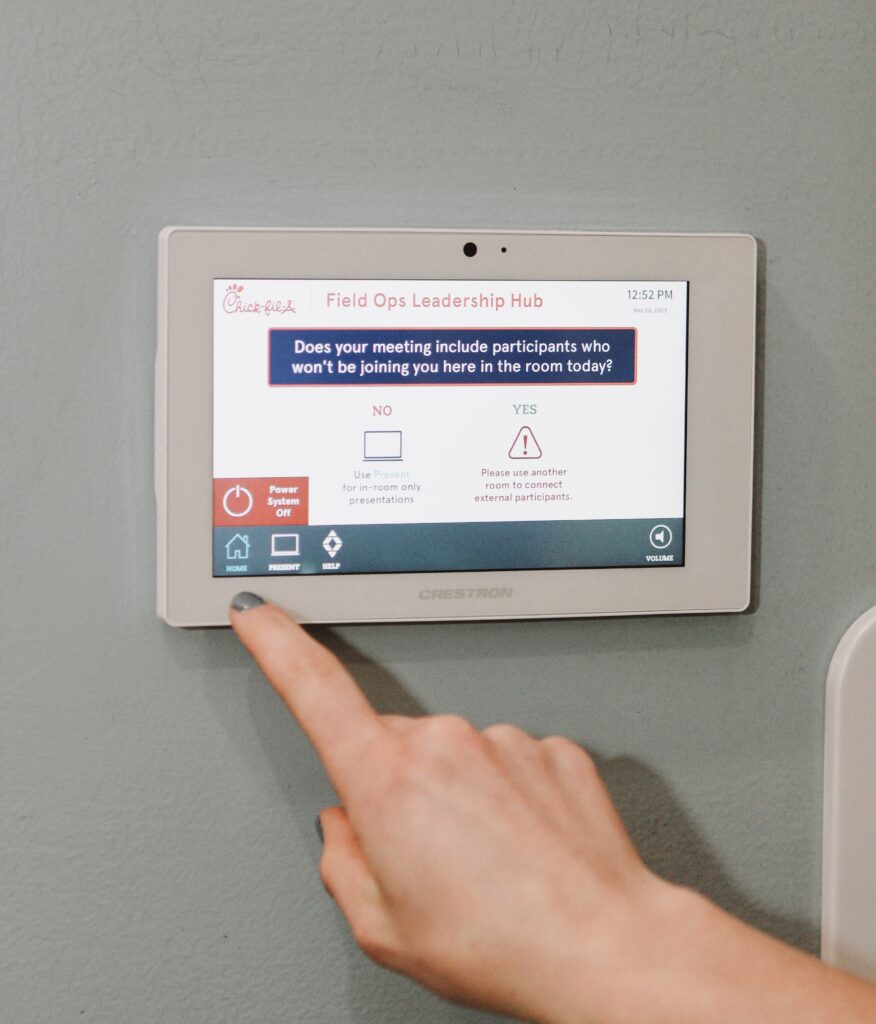The strategic integration of Artificial Intelligence (AI) and Intelligent Automation (IA) into AV design will soon be integral to the modern office – especially for those aiming to lead in innovation and user experience. Integrating these two technologies represents a paradigm shift in designing and interacting with audiovisual environments, offering exciting opportunities for creativity, efficiency, and personalization.
The Importance of the User
The fusion of AI and IA within AV design introduces a new frontier in creating immersive, responsive, and adaptive environments. With its capability for learning and problem-solving, AI can partner with IA’s ability to automate complex processes, transforming systems into intelligent platforms that anticipate and react to user needs in real time.
At the heart of this technological convergence is the user experience. AI and IA can analyze vast amounts of data from user interactions, environmental conditions, and content preferences to create highly personalized audiovisual experiences. For instance, AI-driven systems can adjust lighting, sound, and visual content in real time to match the audience’s preferences, further enhancing engagement and satisfaction.
The strategic integration of these two technologies also promises to revolutionize the operational aspect of AV systems. Predictive maintenance powered by AI algorithms can foresee and address system issues before they impact performance, significantly reducing downtime and maintenance costs. Intelligent automation streamlines content distribution, system calibration, and environmental adjustments, freeing human operators to focus on more strategic tasks.
The Role of the Engineer
While the benefits are vast, integrating AI and IA into the design of our AV systems comes with its challenges. These include technical complexities, data privacy concerns, and AV professionals’ need for continuous learning and adaptation.
The technical complexity of designing and implementing AI and IA-enabled systems requires a deep understanding of AV and the respective technologies. Engineers need to acquire new skills and knowledge in data science, machine learning, and software development to be truly effective with these solutions, and collaboration across these disciplines will be crucial to harnessing their full potential.
Given AI and IA’s reliance on data, ensuring user privacy and data security is paramount. We must balance personalization and privacy while adhering to data protection regulations and ethical standards. This means implementing robust security measures and transparent data practices and building user trust.
These technologies continually evolve, requiring us to embrace a culture of learning and innovation. Keeping abreast of the latest developments, experimenting with new approaches, and fostering a continuous improvement mindset will be vital to integrating AI and IA effectively.
Charting the Future
The strategic integration of AI and IA is more than a technological upgrade; it reimagines how we interact with audiovisual environments. By making informed strategic choices, enhancing user experience, and navigating the challenges with foresight and innovation, we can define the next generation of solutions.
In this journey, our role is to adopt new technologies and become visionaries who can foresee the implications of these integrations and innovate responsibly. The goal is to create experiences that are not only technologically advanced but also meaningful to all users.
The AV industry has the opportunity to redefine itself as a leader in technological innovation, shaping how people experience and interact with the world around them. By strategically embracing AI and IA, we can unlock new possibilities in our designs, creating experiences that were once only imagined. The future of AV is not just about technology; it’s about creating connections, enhancing understanding, and enriching the human experience.



